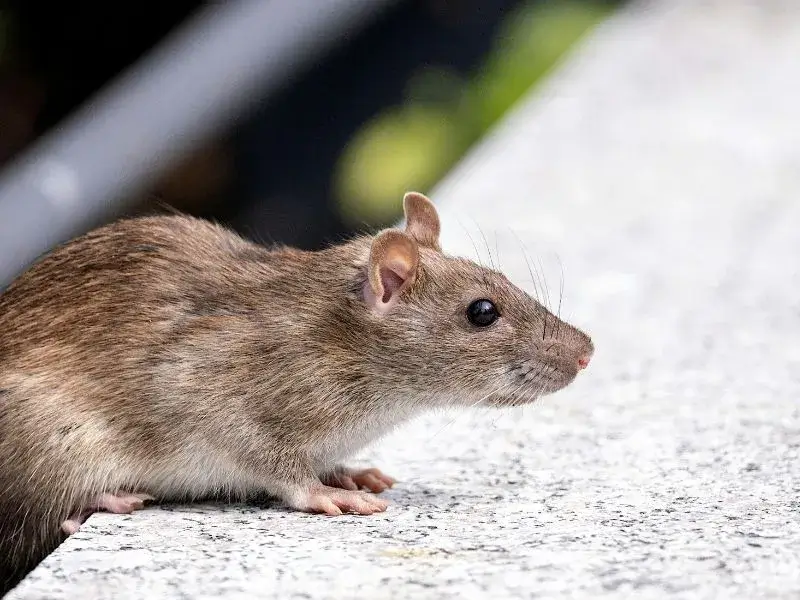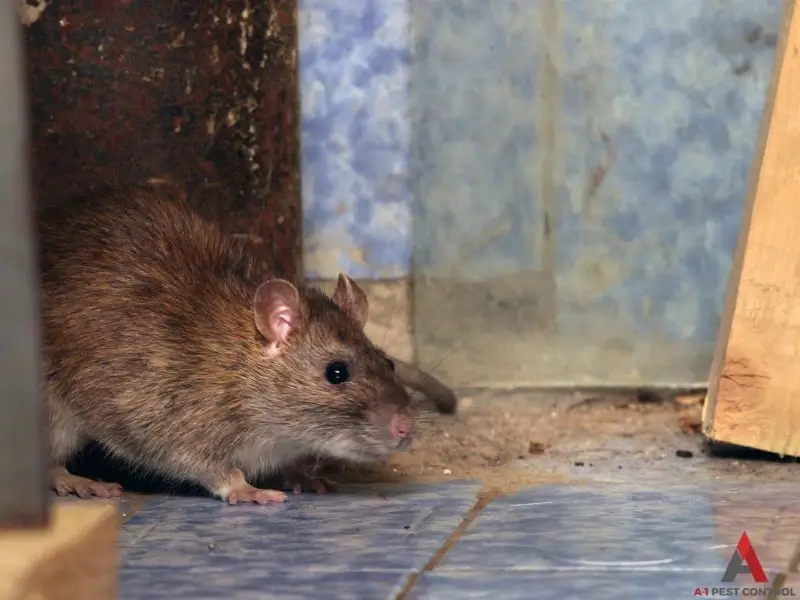
Rats
Rats: Characteristics, Behavior & Identification
When rats show up, they don’t come quietly. Scratching in the walls, gnawed-up wires, and droppings in the pantry are just a few of the clues these pests leave behind. Rats are opportunistic, clever, and quick to settle into homes and businesses across Western North Carolina, especially when the weather cools down.
Unlike mice, rats are larger, bolder, and capable of doing more damage in less time. They chew through insulation and wiring, contaminate surfaces, and can even spread diseases through droppings and urine. Whether you’ve spotted one or suspect they’re hiding somewhere out of view, fast action is your best defense.

Rats vs. Mice: Mice may be more common, but rats are bigger, stronger, and cause greater structural damage. A full-grown rat can squeeze through a hole the size of a quarter and leave a mess in its wake.
Table of Contents
How to Identify Rats
Common Rat Species in Western NC
Not all rats behave the same, or live in the same places. In Western North Carolina, you’re most likely to run into two species: Norway Rats and Roof Rats. Knowing which one you’re dealing with can make a big difference when it comes to trapping, baiting, and exclusion.
- Norway Rats (Brown Rats): These are the heavyweight champs of the rat world. Norway rats have thick, dense bodies and prefer to stay low to the ground. You’ll often find them burrowing under foundations, nesting beneath porches, or slipping into crawl spaces and basements. Because they’re poor climbers, they’re rarely found above ground level.
- Roof Rats (Black Rats): Slimmer and more athletic, roof rats are skilled climbers that love elevation. They tend to nest in attics, soffits, wall voids, and rooflines, getting in through vents or gaps near eaves. Their lean build and long tails make it easy for them to scale siding, vines, or nearby trees to gain access to upper levels.
Physical Characteristics
Rats can be mistaken for large mice, but they’re built differently, and their size alone is a giveaway. Here’s how to tell them apart at a glance:
- Size: Adult rats typically measure between 7 and 10 inches from nose to rump, with an additional 6–8 inches of thick, scaly tail. That’s more than double the size of a typical field mouse.
- Fur Color:
- Norway rats have coarse, brown or gray fur and a lighter belly.
- Roof rats are sleeker, with dark brown or black fur and a pale underside.
- Head & Facial Features: Rats have broader, more robust heads than mice. Their ears and eyes are proportionally smaller, and their snouts are blunt; not pointy like a mouse’s. Norway rats have smaller, beady eyes, while roof rats have slightly larger eyes suited for nighttime movement.
- Tails: Thick, hairless, and scaly, rat tails are one of their most distinguishable features, often longer than their body in roof rats and slightly shorter in Norway rats.
Behavior & Habits
Rats are highly adaptable and surprisingly clever, which makes them harder to control than many other pests. Here’s what to know about how they behave in and around Western NC homes:
- Nocturnal Scavengers: Rats do most of their foraging at night, when your home is quiet. If you’re hearing scratching in the walls or finding food containers chewed through in the morning, you’re likely dealing with nighttime activity.
- Highly Intelligent, Cautious Movers: These rodents are smart and they learn quickly. Many rats show “bait shyness,” meaning they’ll avoid traps or unfamiliar objects until they’ve had time to assess them. That’s why DIY methods can be hit-or-miss, especially with established infestations.
- Prolific Breeders: A single pair of rats can produce hundreds of offspring in one year. That’s part of what makes rat infestations in Western NC escalate so quickly once they get started.
- Quiet, Hidden Nesters: Rats prefer dark, undisturbed areas where they can build nests from shredded insulation, fabric, paper, and other soft materials. Common nesting spots include:
- Wall voids and attic insulation
- Crawl spaces and under-floor areas
- Behind appliances or stored clutter
- Burrows outside near foundations
- Territorial Behavior: Once rats find a reliable food and shelter source, they’ll defend that space and return to it repeatedly—especially if entry points aren’t sealed.
Seasonal Insight: Rat infestations are more common in fall and winter as they seek warmth and shelter indoors. Watch for signs as the temperature drops.
Signs of a Rat Infestation
You don’t need to see a rat to know they’re there. Look for:

- Droppings: Larger than mouse droppings, capsule-shaped, and found near food or nesting areas
- Gnaw Marks: On furniture, food packaging, pipes, wires, and baseboards
- Nesting Material: Shredded paper, insulation, cloth, or leaves in hidden spots
- Grease Trails & Tracks: Smudges along walls from oily fur
- Noises at Night: Scratching, scurrying, or chewing in walls or ceilings
- Pet Reactions: Dogs and cats fixating on walls or furniture may be sensing activity
Rat Prevention Tips
The best way to avoid a rat problem? Make your space less attractive in the first place.
Seal Entry Points
- Block gaps in walls, crawlspaces, attics, and around plumbing
- Use metal mesh, steel wool, or other chew-proof materials
- Install door sweeps and attic vent covers
Eliminate Food & Water Sources
- Store food—including pet food—in airtight containers
- Take out garbage regularly and secure trash bins
- Fix leaks and clean up standing water
- Improve water runoff by installing sufficient drainage systems
Declutter Inside & Out
- Remove clutter and debris inside storage spaces
- Enlist the help of a professional who can remove or prune overgrown shrubs and trees near your home
- Store firewood away from the house
Use Natural & Mechanical Deterrents
Use Natural & Mechanical Deterrents
- Try peppermint oil at common entry points
- Use ultrasonic repellents or secure bait stations
- For persistent rat problems, professional help is the safest bet
Quick Tip: Rats don’t need much to survive: just shelter, a few crumbs, and water. That’s why proactive rodent prevention is key year-round.
Rat Control & Removal Methods
Getting rid of rats takes more than setting a few traps. These pests are smart, persistent, and quick to return if their access points aren't addressed. Whether you're dealing with an active infestation or trying to prevent one, effective rat control starts with a strategic, full-property approach that goes beyond the DIY aisle.
Trapping & Baiting
• Snap Traps: Traditional and effective for small infestations
• Electronic Traps: Humane and mess-free
• Bait Stations: Secure, tamper-resistant, and great for ongoing control
Professional Rat Control Services
DIY solutions rarely address the full problem. A-1 Pest Control’s rodent control services in Western NC include:
• A full inspection to identify entry points and nesting areas
• A tailored removal strategy using safe, reliable techniques
• Follow-up monitoring and prevention tips
• Exclusion work to prevent future infestations
Want year-round protection? Check out our pest control plans for comprehensive coverage that includes rats and other common pests.
Act Fast: Rat populations grow quickly; females can produce over 50 offspring per year. The longer you wait, the harder they are to control.
Frequently Asked Questions About Rats
How can I tell if I have rats or mice?
Look at the droppings and noise level. Rat droppings are larger, and their movement is louder and more disruptive.
Are rats dangerous?
Yes. Rats spread disease, gnaw through wiring, and leave droppings and urine throughout the home.
Where do rats typically nest?
Common areas include walls, attics, basements, crawlspaces, and piles of clutter inside or out.
What’s the best way to get rid of rats?
Professional trapping, baiting, and sealing off entry points is the most effective long-term solution.
Do rats carry diseases?
Absolutely. Rats can carry salmonella, leptospirosis, hantavirus, and more. They can also contaminate food and surfaces. Learn more about rodent-related dangers and how to protect your home.
Contact A-1 Pest Control for Rat Control & Prevention
Think you’ve got rats? Don’t wait. A single rat can quickly lead to a full-blown infestation. Call 828-481-9140 or fill out the below to schedule a free inspection with A-1 Pest Control today. We proudly serve communities across Western NC, including Blowing Rock, Lenoir, Mooresville, Hickory, Hendersonville, West Jefferson, and surrounding areas.


